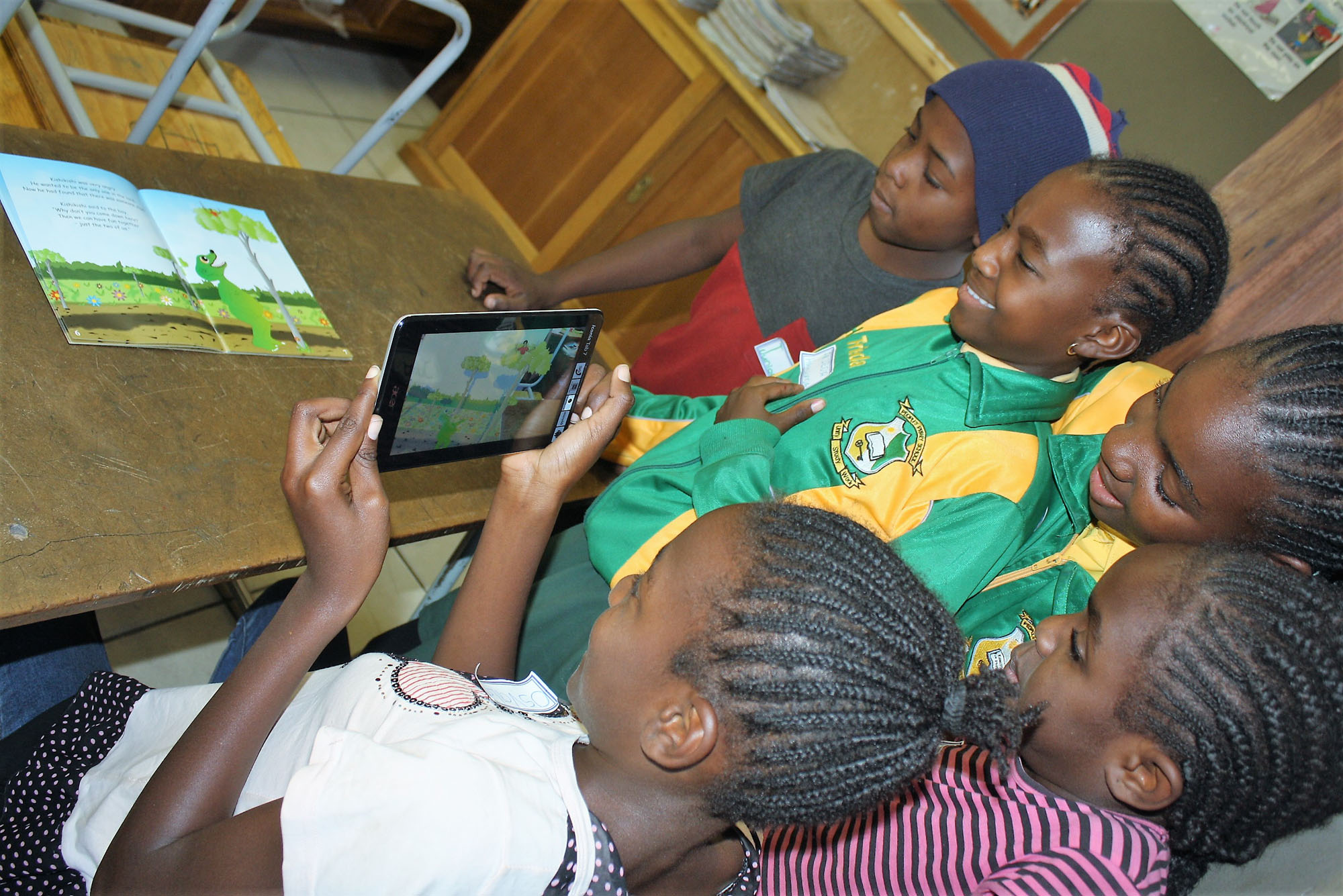Community lab, Namibia University of Science and Technology
Issue: XXIV.6 November + December 2017Page: 16
Digital Citation
Authors:
Heike Winschiers-Theophilus, Anicia Peters
How do you describe your lab to visitors? The Community Lab of the Faculty of Computing and Informatics (FCI) at the Namibia University of Science and Technology (NUST) is a transdisciplinary group. We consist of researchers and students from the faculty, distinct local community members from across Namibia, international academic partners, and postgraduate students hailing from fields such as design, computer science, and psychology. Most projects encompass research and community outreach as well as teaching and learning with early-career students. Our main design partners are members of indigenous and marginalized communities in rural and informal settlements. Jointly we co-design in-situ technologies agreed upon to be relevant for a specific context. This includes tools for indigenous knowledge holders to digitalize their own indigenous knowledge, a citizen-journalist platform to enhance information flow in informal settlements, a career-counseling game for school leavers, as well as crowdfunding and crowdsourcing platforms, among others. Currently we are also co-designing a school tech library with children in Katutura, Windhoek, over a three-month period, including space and activity design. This has been exciting and rewarding so far.
What is a unique feature of your lab? We design with communities within their everyday context throughout Namibia, often in rural areas. Our design practice, called community-based co-design, is deeply grounded in participatory design and action research while embracing diverse knowledges. We are fortunate to have built long-term collaborations with a number of indigenous communities still practicing many of their traditions. Our projects are carefully aligned with the Namibian national agenda, striving for socioeconomic equity. Thus, a number of our projects are part of national initiatives such as the development of the National Indigenous Knowledge Management System or the Tales of Nali technology hut, which is a component in the national campaign against gender-based violence. This interactive installation engages participants in a digital role-playing simulation while they're seated in a reconstructed traditional hut, highlighting traditional and modern values that problematize violence.
Briefly describe a day in the life of your lab. Every community and day full of interactions is different, but our approaches are similar, though always contextually adapted. Considering that we have an ever-growing amount of research questions, as well as ongoing technology developments and design projects within one community, we try to make the most out of a day when working with the community. We carefully plan the activities, methods, tools needed, and, most of all, the scheduling of actions, so we could have up to four sessions running in parallel, each facilitated by senior students or staff. If the target groups differ it is much less stressful, for example, with the elders in one group and the youth engaged in other activities. Often, however, the same people are needed for different activities while engaged in their own daily activities such as cattle management, wood collection, cooking, and making clothes. Delicate and flexible scheduling is therefore required, often yielding spontaneous and newly negotiated interactions. We tend to be extremely exhausted after a field trip but also enthusiastic about the new experiences and lessons learned.
What is one feature of your lab that you could not do without? The dedicated community members, of course, are our biggest asset. Thanks to their different worldviews, they bring unique concepts and ideas to our transcultural design, allowing for original design realizations. For example, we have been exploring emerging technologies such as augmented reality in conjunction with traditional cultural objects such as OvaHimba bracelets (above) and indigenous children stories, as well as new interface features on our 3D graphic systems.
We are focusing on the most pressing issues of communities while also adhering to cultural protocols.
What is one feature of your lab you want and do not have? Considering the substantial kilometers of traveling on the road and our off-the-grid activities, we would like to have a full-fledged mobile community lab, including our own bus or truck with the necessary technologies, and, most important, a power supply and Internet access. Then we could do coding and production within the community setting. Also, we would like to have more technical equipment in general to expand our research—table tops, eye tracking, brain interfaces, and so on.
What is the one thing you see as most important about the work you do there? The most important aspect of designing with indigenous and marginalized communities is that we are jointly co-creating a desirable future. We are focusing on the most pressing issues of communities such as inequity, gender-based violence, integration of minorities, education, and cultural preservation within local knowledge systems, while also adhering to cultural protocols. We co-develop tools and technologies that support a paradigm shift in the re-positioning of indigenous and marginalized communities. Our projects that are considered most successful are not the ones with the highest academic output but rather those that positively affect the community and society at large.
Copyright held by authors
The Digital Library is published by the Association for Computing Machinery. Copyright © 2017 ACM, Inc.









